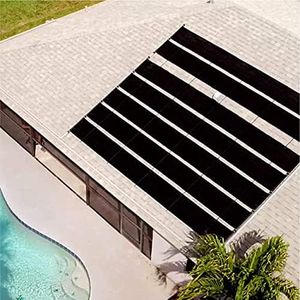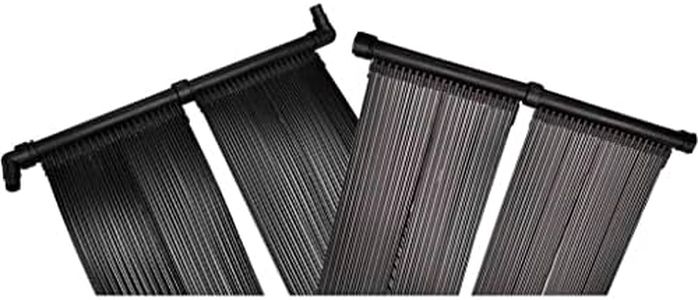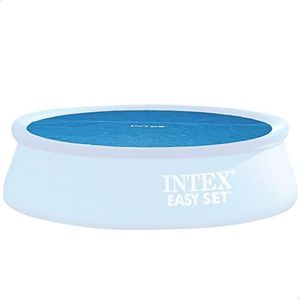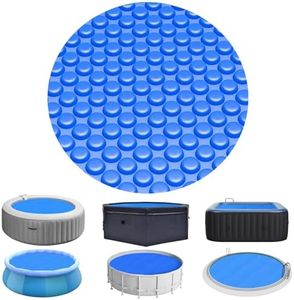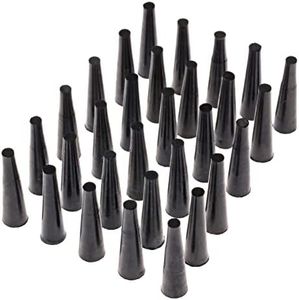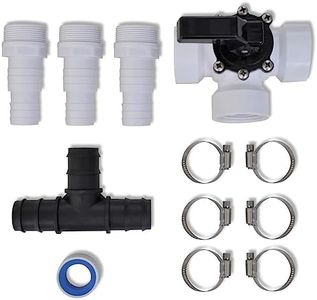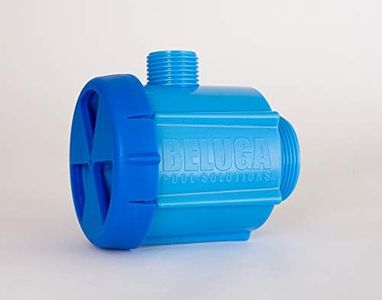We Use CookiesWe use cookies to enhance the security, performance,
functionality and for analytical and promotional activities. By continuing to browse this site you
are agreeing to our privacy policy
10 Best Pool Solar Heaters
From leading brands and best sellers available on the web.Buying Guide for the Best Pool Solar Heaters
Choosing a pool solar heater can make swimming more enjoyable and extend your pool season by harnessing free energy from the sun. It's important to match the system to your pool size, climate, and swimming habits. By understanding the main features and how they relate to your needs, you can ensure you’re selecting a heater that provides efficient, reliable, and long-lasting performance.Collector Size (Surface Area)The collector size refers to the total surface area of the solar panels or mats that absorb sunlight and transfer heat to your pool water. Having the right amount of collector area is crucial, as it determines how quickly and effectively your pool can be heated. For small pools or warmer regions, a smaller surface area may suffice, but larger pools or cooler climates generally require more collector area. To pick the right size, consider your pool’s surface area: usually, the collector area should be between 50% to 100% of the pool surface. If you want to swim in cooler weather or heat the pool quickly, lean toward the higher end.
Collector TypeSolar pool heaters use either unglazed or glazed collectors. Unglazed collectors use heavy-duty rubber or plastic and are suitable for most residential pools in mild to warm climates. Glazed collectors, made with glass coverings and often with metal parts, are more efficient in colder conditions and extend the swimming season in cooler places. Choose unglazed if you live in a region where it rarely drops below freezing. If you hope to swim comfortably in cooler months or live in a region with cold nights, glazed collectors are a better fit.
Installation RequirementsInstallation requirements include the available roof or ground space for the panels, proximity to the pool, and the type of mounting required. Some systems need large, uninterrupted roof areas for optimal performance, while others can be installed on the ground. Consider your available space and whether it gets sufficient sun exposure throughout the day. Accessibility for maintenance should also be taken into account. If your roof space is limited or shaded, look for ground-mount options.
Flow Rate and CompatibilityThe flow rate spec measures how much water passes through the heating system per hour, and it should be compatible with your pool pump. If the flow rate is too low, the water may not be heated effectively; too high, and the heater may not operate efficiently. Check the flow rate required by the heater and match it with your pool pump’s capacity. If you have a small pump, select a system designed for lower flow rates to avoid performance issues.
Durability and Weather ResistanceDurability relates to how well the heater materials withstand weather, UV exposure, chlorine, and freezing temperatures. Solar collectors made with UV-resistant, quality plastics will last longer in hot and sunny climates, while some might endure freezing better if you’re in a region with harsh winters. When choosing, think about your climate: prioritize materials and construction designed to survive your local conditions for years of trouble-free use.
Control and Bypass OptionsSome pool solar heaters come with manual or automatic flow controls that let you direct water through the solar panels only when heating is needed, increasing both efficiency and flexibility. Automatic bypass valves can help maintain your desired pool temperature and improve convenience. If you're after simplicity and ease of use, or want to maximize efficiency, opt for systems with built-in or optional controllers.
